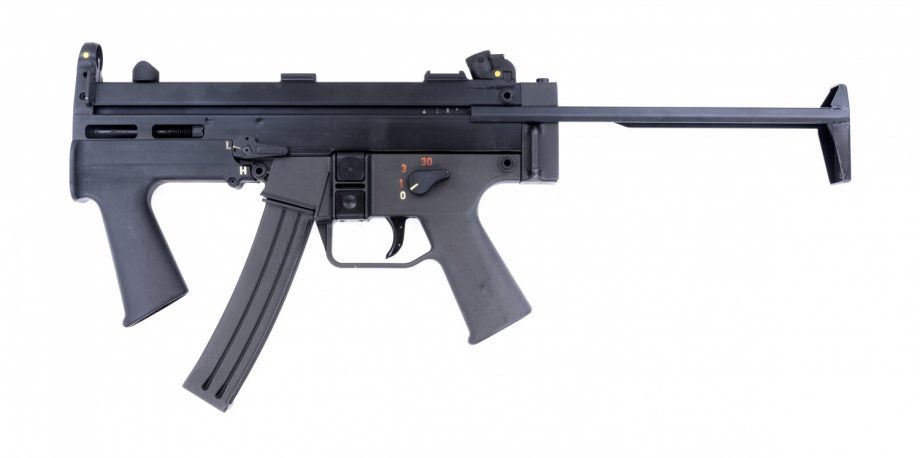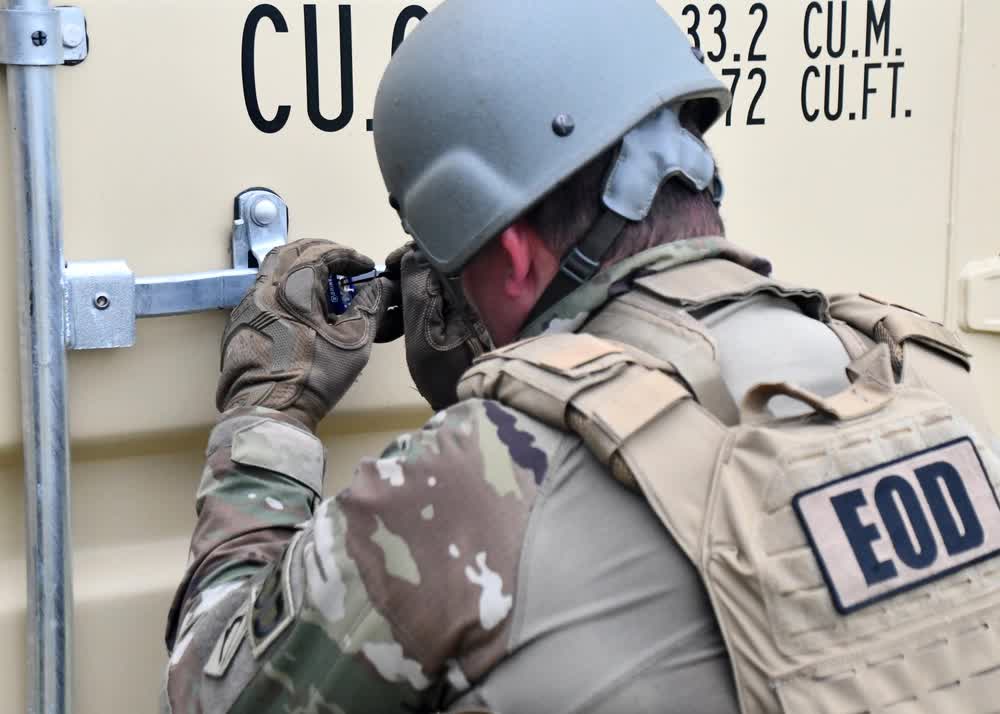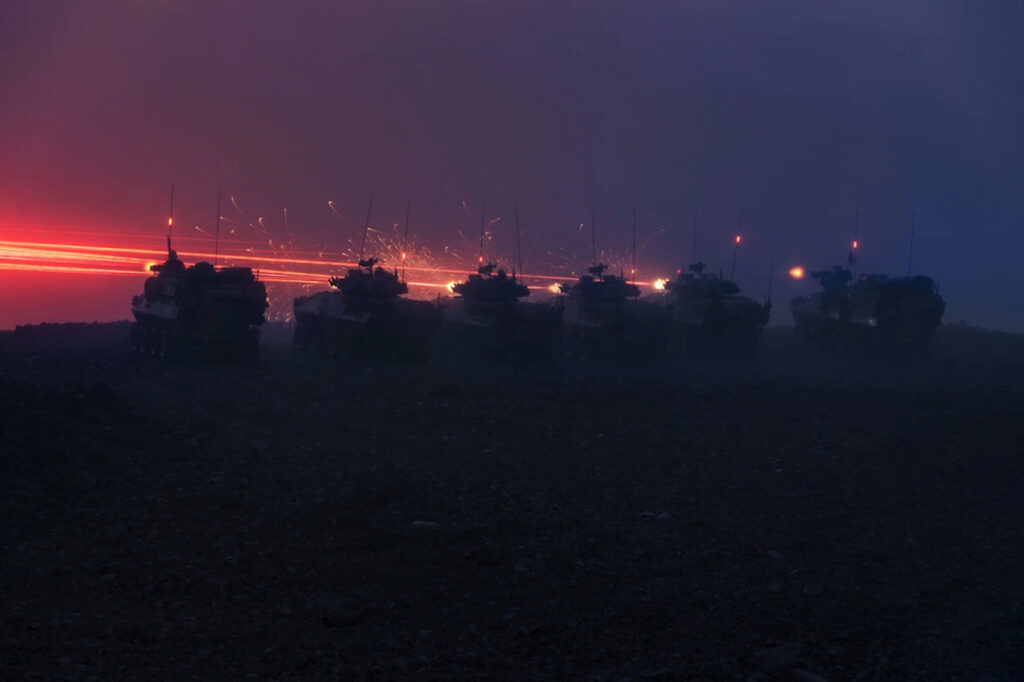It’s rare when a gun is truly mysterious and we can’t answer why it was made, who used it, or why it succeeded or failed. Today’s case is more bizarre because the weapon in question was not made by a fly-by-night company, but by HK, a major German arms firm that has equipped the US Marine Corps, special operations units, and a laundry list of police forces. The gun we’ll talk about is the HK SMG 2.
You might ask why the gun has a generic name: HK doesn’t have an official SMG 1, although that role is fulfilled by the MP5. The MP5 was HK’s first SMG, and while not their last, it’s its most legendary. It has armed practically every Western special operations force at one time or another and hundreds of special weapons and tactics teams.
The project started in the 1980s. At the time, the submachine gun more or less ruled the close-quarter battle market. SEALs, Delta Force, Force Recon marines, and more carried MP5s when short-range encounters were likely. These guns were easy to suppress, and HK famously produced an integrally suppressed MP5 known as the MP5SD.
These were great guns by all standards, but the Navy wanted to test a better submachine gun. So, HK developed the HK SMG 2 for the US Navy.
Inside the SMG 2
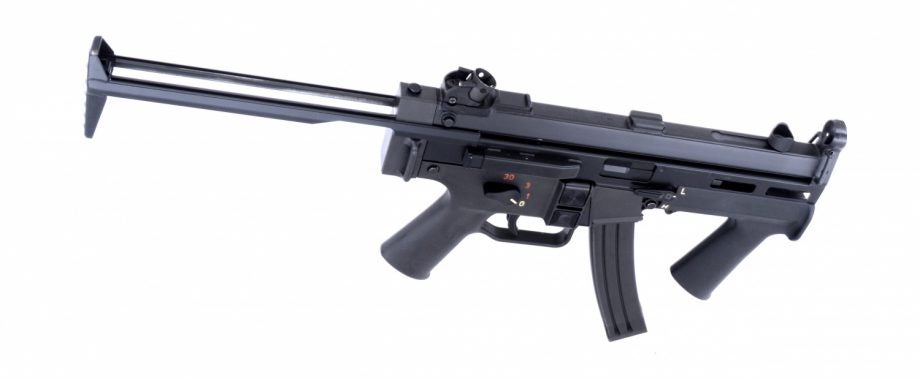
The HK SMG 1 never made it beyond the prototype stage, but the HK SMG 2 was sent to the US military for testing. At first glance, the SMG 2 looks like a heavily modified MP5 – specifically, the HK MP5K model. While they share similarities between the two weapons – like the pistol grip and safety – there are major differences.
First, gone is the MP5’s famed roller-delayed blowback system. In its place, the HK SMG 2 features a simpler straight-blowback design. Straight-blowback guns famously have more recoil than roller-delayed ones, so this was an odd choice by HK
The SMG 2 and SMG 1 feature receiver systems much like the M16 series. It had an upper and lower receiver that could be separated. The lower receiver is made from polymer, which was very advanced in the 1980s. The SMG reportedly had a firing rate of 1,000 rounds a minute, making it extremely fast.
The barrel was also free-floated under the handguard for improved accuracy and allowed for an interesting way to attach a suppressor. Past about three inches of barrel sat threads for suppressor attachment. This eliminated the need for a protruding barrel and lug muzzle device.
The SMG 2’s ergonomics were better than the MP5’s
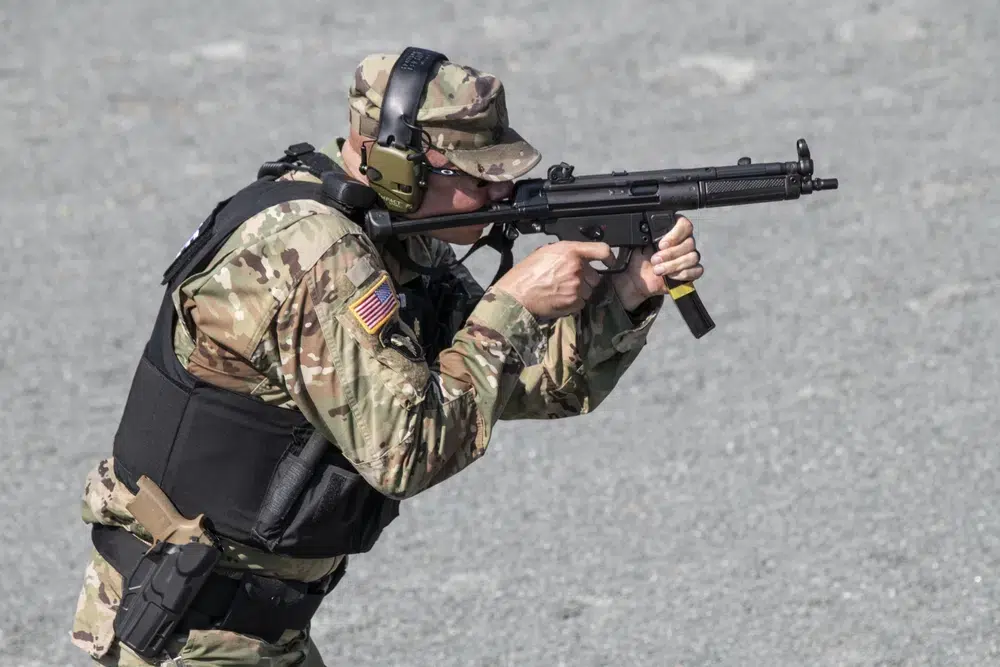
HK used a very low-profile collapsable stock on the SMG 1 and SMG 2 series: Looking at photos of SMG 2s with their stock collapsed you might think the weapon had no stock at all.
One feature that’s not hidden is the weapon’s giant polymer forward grip that gives it a very distinct look. It also likely helped the user’s hand from getting too warm during sustained fire.
The SMG 2 featured ambidextrous controls, which included a magazine release, bolt release, and safety. Unlike the MP5, the SMG 2 did have a bolt that locked back when the last shot was fired. HK moved the cocking handle to the top of the gun, much like the Thompson design, which had the benefit of making it truly ambidextrous.
Ergonomically, the HK SMG 2 was certainly an improvement over the MP5.
The purpose of the SMG 2
It isn’t clear what the purpose of the SMG 2 was beyond being better than the MP5. Yet, we do have some clues. The first comes from the SMG 1’s sights. The gun had a big, complicated sighting system designed to work with both supersonic and subsonic rounds. Subsonic rounds are the preferred option of suppressed shooters since they do not have the telltale supersonic crack.
The SMG 2 also had a gas bleed system that used a lever and allowed the user to reduce the velocity of any supersonic round to subsonic. A series of gas ports sat in front of the chamber, and when the lever was positioned correctly, it would bleed off gas to reduce the speed of the cartridge. This allowed the gun to fire any 9mm round and make it subsonic.
It seems the Navy really wanted a gun that worked well suppressed.
Related: This is why a SEAL Team 6 member uses the odd Taurus Judge revolver
The secrecy surrounding the weapon
The US Navy likely ordered the gun for the SEAL teams – or, more specifically, SEAL Team 6, also known as DEVGRU. Usually, we tend to have less information on equipment acquired for SEAL Team 6 than for other operational forces. There have been unsubstantiated rumors that Richard Marcinko, the founder of SEAL Team 6, had an SMG 2 in his equipment when he was operating Red Cell, a team created to test the security of Navy’s facilities. Reportedly, HK produced 60 SMG 2s and the Navy tested the gun for two years.
Eventually, the testing concluded and the Navy wasn’t interested in purchasing additional SMG 2s, but it’s unclear why. Likely, the SMG 2 didn’t provide enough benefit over the MP5 to justify the swap. Further, there was also a move toward short carbines over SMGs, which might have contributed to the Navy’s decision.
The HK SMG 2 wasn’t used by anyone else, although HK used elements of the gun in the UMP, and a very similar stock design was even used for the MP7. The SMG 2 died a quiet death, with HK retaining a few examples in its famed grey room.
Read more from Sandboxx News
- Here’s why the F-15EX is the deadliest Eagle to date
- The social hierarchy of US special operations units
- China offered Taiwanese pilot $15 million to defect with US-made helicopter
- Advice on self-discipline from an F-35 pilot instructor
- DARPA is developing laser technology to transfer power all over the world
